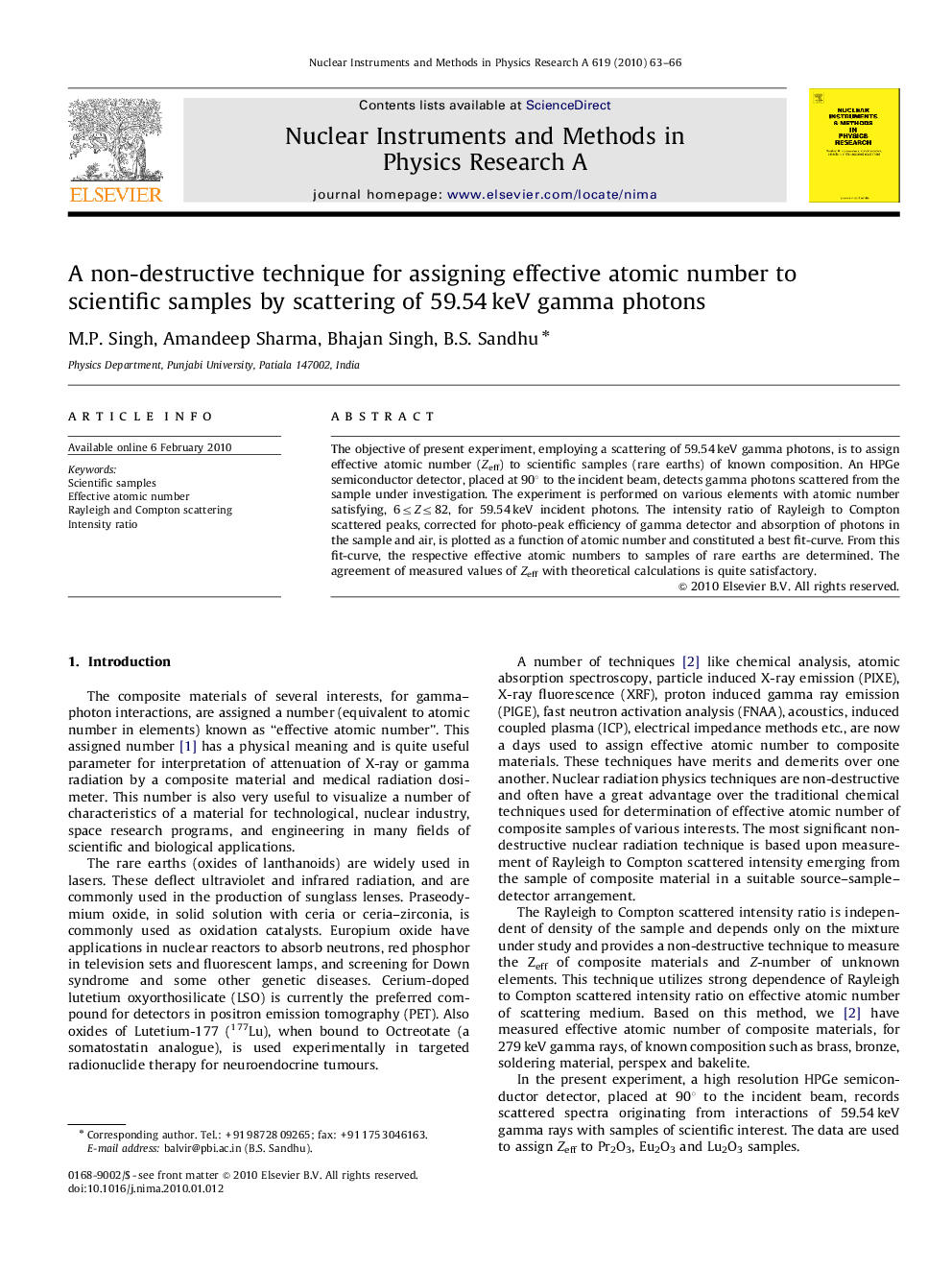| Article ID | Journal | Published Year | Pages | File Type |
|---|---|---|---|---|
| 1827151 | Nuclear Instruments and Methods in Physics Research Section A: Accelerators, Spectrometers, Detectors and Associated Equipment | 2010 | 4 Pages |
The objective of present experiment, employing a scattering of 59.54 keV gamma photons, is to assign effective atomic number (Zeff) to scientific samples (rare earths) of known composition. An HPGe semiconductor detector, placed at 90° to the incident beam, detects gamma photons scattered from the sample under investigation. The experiment is performed on various elements with atomic number satisfying, 6≤Z≤82, for 59.54 keV incident photons. The intensity ratio of Rayleigh to Compton scattered peaks, corrected for photo-peak efficiency of gamma detector and absorption of photons in the sample and air, is plotted as a function of atomic number and constituted a best fit-curve. From this fit-curve, the respective effective atomic numbers to samples of rare earths are determined. The agreement of measured values of Zeff with theoretical calculations is quite satisfactory.
